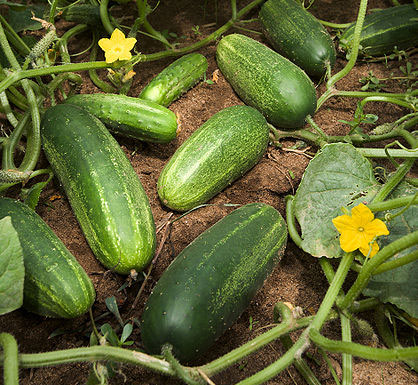Courgette Fruit Problems

Courgettes
Curcurbits are members of the 965 species gourd family that includes Marrows (Courgettes), Cucumber, Melon, Pumpkin and Squash. Â
Courgette Fruiting
Plants produce both male and female flowers. The male flowers grow on a thin erect stem. Female flowers are recognisable because they contain an ovary within a swelling behind the yellow flower. Male flowers grow above the vine with a central stamen containing pollen with which to fertilise the female.
The fruit grows behind the pollinated femail flower eventually sheding the petals. Left to grow the courgette will continue into a marrow sized fruit. Some small varities have now been bred to produce small fruit.
 What can go wrong:
- Male flower production will be favoured by low temperatures and or excessive shade. Give plants enough space. Choose a warm sunny position.
- At the start of flowering often only male flowers grow. As days lengthen both flowers should be formed.
- Fruit only swelling at the neck near the top indicates incomplete pollination due to cold or lack of insect visits. Remove these fruit to avoid end rot and shriveling.
- Too many fruit on a plant will encourage shriveling and rotting of fruitletes. Remove all useable fruit as soon as possible.
- Fruit allowed to grow to maturity as marrows will switch off the cropping as the reproduction is done.
Pollinating Tips
- Encourage insects to help move the mature pollen. Avoid insecticides.
- Wind can help pollination but the flower petals are more designed for insects making a funnel shape .
- In a greenhouse or cold frame the gardener can remove a male flower and manually transfer the pollen from male to female by tapping the male flower above the ovary.
- Do not pick male flowers for hand pollination until the pollen is mature.